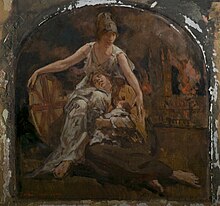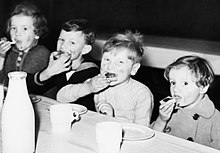
Leopold III was King of the Belgians from 23 February 1934 until his abdication on 16 July 1951. At the outbreak of World War II, Leopold tried to maintain Belgian neutrality, but after the German invasion in May 1940, he surrendered his country, earning him much hostility, both at home and abroad.
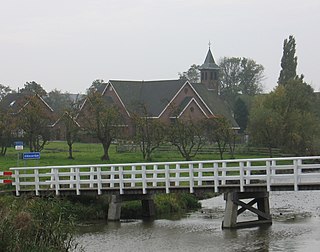
Alblasserdam is a town and municipality in the western Netherlands, in the province of South Holland. It covers an area of 10.06 km2 (3.88 sq mi), of which 1.28 km2 (0.49 sq mi) is water, and has a population of 20,069 as of 2019. Alblasserdam is officially a part of the Drechtsteden region. A portion of the small village of Kinderdijk, which boasts the largest and most famous concentration of windmills in the Netherlands, is part of Alblasserdam.

Hubert Marie Eugène Pierlot was a Belgian politician and Prime Minister of Belgium, serving between 1939 and 1945. Pierlot, a lawyer and jurist, served in World War I before entering politics in the 1920s. A member of the Catholic Party, Pierlot became Prime Minister in 1939, shortly before Belgium entered World War II. In this capacity, he headed the Belgian government in exile, first from France and later Britain, while Belgium was under German occupation. During the German invasion of Belgium in May 1940, a violent disagreement broke out between Pierlot and King Leopold III over whether the King should follow the orders of his ministers and go into exile or surrender to the German Army. Pierlot considered Leopold's subsequent surrender a breach of the Constitution and encouraged the parliament to declare Leopold unfit to reign. The confrontation provoked a lasting animosity between Pierlot and other conservatives, who supported the King's position and considered the government's exile to be cowardly.

The Belgian Resistance collectively refers to the resistance movements opposed to the German occupation of Belgium during World War II. Within Belgium, resistance was fragmented between many separate organizations, divided by region and political stances. The resistance included both men and women from both Walloon and Flemish parts of the country. Aside from sabotage of military infrastructure in the country and assassinations of collaborators, these groups also published large numbers of underground newspapers, gathered intelligence and maintained various escape networks that helped Allied airmen trapped behind enemy lines escape from German-occupied Europe.
Lieutenant-General Raoul Daufresne de la Chevalerie was a Belgian sportsman and commander of the Free Belgian forces during the Second World War. He was born in Bruges and died in Uccle.

The Free Belgian forces were soldiers from Belgium and its colonies who fought as part of the Allied armies during World War II, after the official Belgian surrender to Nazi Germany. It is distinct from the Belgian Resistance which existed in German-occupied Belgium.

Lieutenant-general BEM Victor Jean Clement, Baron van Strydonck de Burkel was a general of the Belgian Army and the primary architect of the formation of the Free Belgian Forces after Belgium's official surrender on May 28, 1940 in World War II.
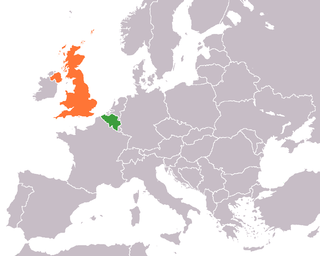
Belgium–United Kingdom relations are foreign relations between Belgium and the United Kingdom. Belgium has an embassy in London and 8 honorary consulates. The United Kingdom has an embassy in Brussels.

Lieutenant General Jean-Baptiste Piron was a Belgian military officer, best known for his role in the Free Belgian forces during World War II as commander of the 1st Belgian Infantry Brigade, widely known as the "Piron Brigade", between 1942 and 1944.

No. 10 (Inter-Allied) Commando was a commando unit of the British Army during the Second World War, recruited largely from non-British personnel from German-occupied Europe. This unit was used to help co-ordinate attacks with other allied forces.
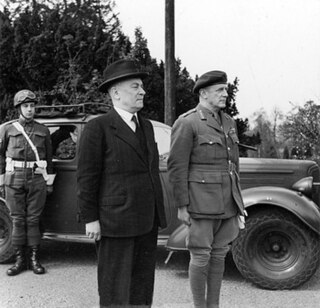
The Belgian Government in London, also known as the Pierlot IV Government, was the government in exile of Belgium between October 1940 and September 1944 during World War II. The government was tripartite, involving ministers from the Catholic, Liberal and Labour Parties. After the invasion of Belgium by Nazi Germany in May 1940, the Belgian government, under Prime Minister Hubert Pierlot, fled first to Bordeaux in France and then to London, where it established itself as the only legitimate representation of Belgium to the Allies.

The Flemish or Flemings are a Germanic ethnic group native to Flanders, Belgium, who speak Dutch. Flemish people make up the majority of Belgians, at about 60%.

Despite being neutral at the start of World War II, Belgium and its colonial possessions found themselves at war after the country was invaded by German forces on 10 May 1940. After 18 days of fighting in which Belgian forces were pushed back into a small pocket in the north-west of the country, the Belgian military surrendered to the Germans, beginning an occupation that would endure until 1944. The surrender of 28 May was ordered by King Leopold III without the consultation of his government and sparked a political crisis after the war. Despite the capitulation, many Belgians managed to escape to the United Kingdom where they formed a government and army-in-exile on the Allied side.

The history of Belgium in World War I traces Belgium's role between the German invasion in 1914, through the continued military resistance and occupation of the territory by German forces to the armistice in 1918, as well as the role it played in the international war effort through its African colony and small force on the Eastern Front.
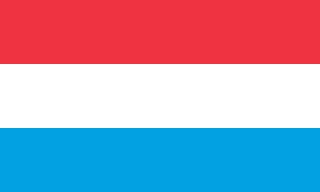
The Luxembourgish government in exile, also known as the Luxembourgish government in London, was the government in exile of Luxembourg during the Second World War. The government was based in London between 1940 and 1944, while Luxembourg was occupied by Nazi Germany. It was led by Pierre Dupong, and also included three other Ministers. The head of state, Grand Duchess Charlotte, also escaped from Luxembourg after the occupation. The government was bipartite, including two members from both the Party of the Right (PD) and the Socialist Workers' Party (LSAP).
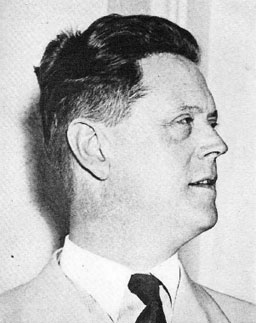
Albert De Vleeschauwer, later Baron Albert De Vleeschauwer van Braekel, was a Belgian politician of the Catholic Party.

Henri Marthe Sylvie Rolin was a Belgian socialist politician, first part of the Belgian Workers' Party (POB-BWP) and later of its successor, the Belgian Socialist Party (PSB-BSP).

Radio Belgique (French) and Radio België (Dutch) were radio broadcasts transmitted to German-occupied Belgium from London during World War II. It was produced with the support of the Belgian government in exile and formed part of the BBC's European Service.

The German occupation of Belgium during World War II began on 28 May 1940, when the Belgian army surrendered to German forces, and lasted until Belgium's liberation by the Western Allies between September 1944 and February 1945. It was the second time in less than thirty years that Germany had occupied Belgium.
Francis Ludwig Carsten was a British historian of Germany. He was described by Peter Wende as "the doyen of British historians working on Germany". He was the father of British sociologist Janet Carsten.
![]() listen )) is a town in the Free State of Saxony, Germany, in the Ore Mountains, and is the capital of the district of Erzgebirgskreis. Annaberg, together with the neighbouring suburb, Buchholz, is the chief seat of the braid- and lace-making industry in Germany, introduced here by Barbara Uthmann in 1561, and further developed by Belgian refugees, who, driven from their country by the Duke of Alva, settled here in 1590.[ citation needed ]
listen )) is a town in the Free State of Saxony, Germany, in the Ore Mountains, and is the capital of the district of Erzgebirgskreis. Annaberg, together with the neighbouring suburb, Buchholz, is the chief seat of the braid- and lace-making industry in Germany, introduced here by Barbara Uthmann in 1561, and further developed by Belgian refugees, who, driven from their country by the Duke of Alva, settled here in 1590.[ citation needed ]
